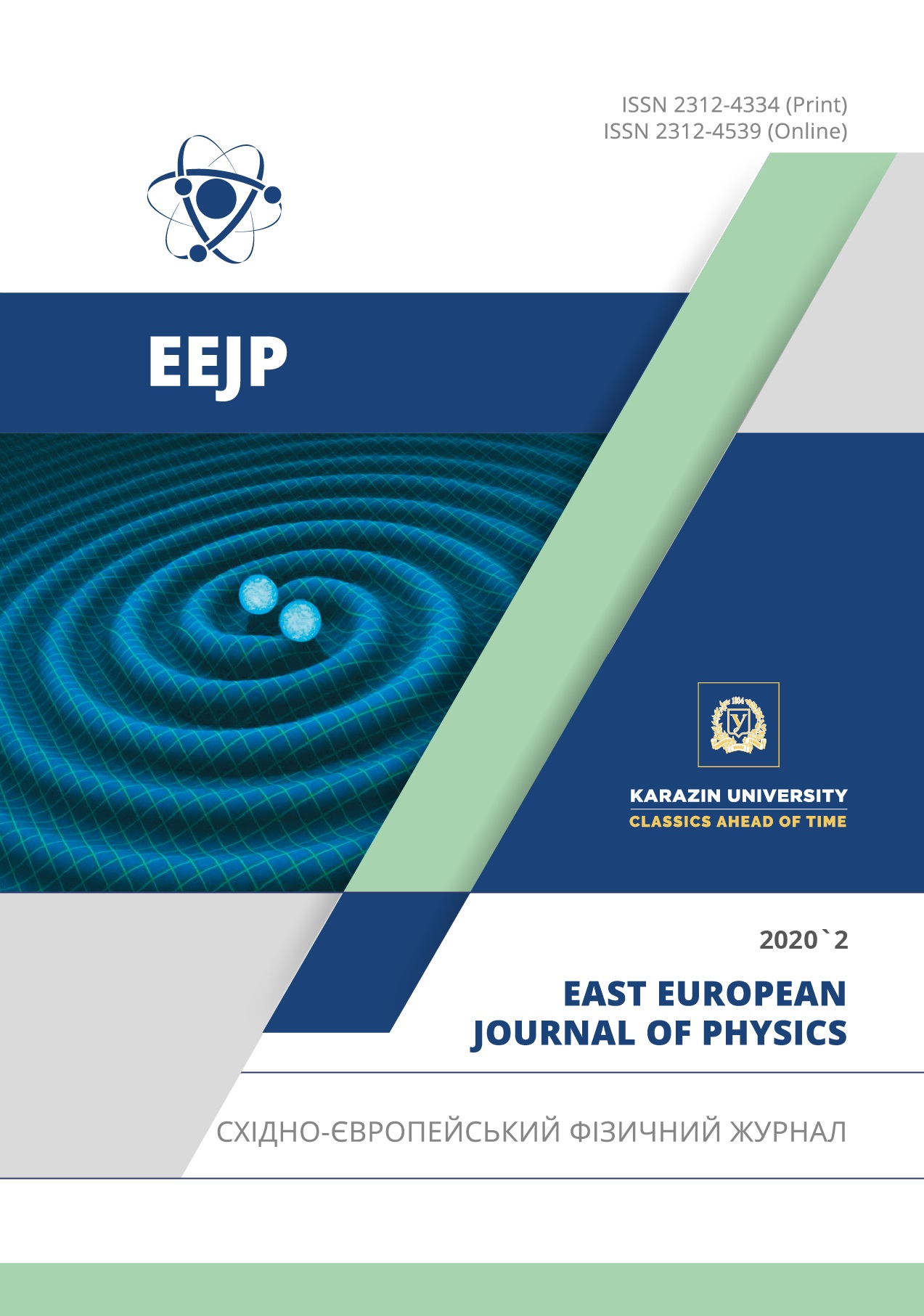Tuning of SnS Thin Film Conductivity on Annealing in an Open Air Environment for Transistor Application
Abstract
The study aimed at enhancement and optimisation of SnS conductivity via annealing for field effect transistor’s semiconductor channel layer application. Interstitials and vacancies in SnS films are known to cause carrier traps which limit charge carriers and hence limit the achievement of the threshold voltage for a field effect transistor operation. Tuning of SnS conductivity for transistor application is of emerging interest for novel device operation. SnS thin film semiconductors of 0.4 thickness were deposited using Aerosol assisted chemical vapour deposition and annealed in open air at annealing temperatures of150, 200, 250, 300 and 350 . Variation of the annealing temperature from 150 through 250 enhances the crystallinity of the annealed thin film samples by increasing the number of crystallites of the annealed films which is also buttress by the decreasing values of FWHM. However a further decrease in crystallite size at higher annealing temperature of 300 to 350 was observed which could be attributed to the fragmentation of clusters of crystallites at higher annealing temperature. Increase in annealing temperature increases grain size leading to the reduction in grain boundaries and potential barrier thereby changing the structure and phase of the films which in essence affects the electrical conductivity of the SnS thin films. The films annealed at 250 exhibited optimum conductivity. The average hall coefficients of the samples deposited at 150 to 250 were positive which indicates that the films annealed at this temperature range are of p type conduction while the average hall coefficients of the samples deposited at 300 and 350 were negative indicating that the films are of n type conduction. The conductivity change is essential for the use of SnS as a semiconductor channel layer especially in a field effect transistor where the device can be tuned to work as a p type or n type semiconductor channel layer.
Downloads
References
T.O. Daniel, Uno EU, K.U. Isah, and U. Ahmadu, EEJP, 3, 71-80 (2019), https://doi.org/10.26565/2312-4334-2019-3-09.
P. Thiruramanathan, G.S. Hikku, R. Krishna-Sharman, and S.M. Siva, International Journal of Technochem Research, 1(1), 59 65 (2015).
Du H, Lin Xi, Xu Z, and Chu D, J. Mater. Sci. 50, 5641-5673 (2015), https://doi.org/10.1007/s10853-015-9121-y.
H. Yuan, X. Wang, and B. Lian, National Nanotechnology, 9, 851-857 (2014), https://doi.org/10.1038/nnano.2014.183.
M. Devika, N.R. Koteeswara, K. Ramesh, K.R. Gunasekhar, E.S.R. Gopal, and R.K.T. Ramakrishna, 21, 1125-1131 (2006), https://doi.org/10.1088/0268-1242/21/8/025.
A. Sugaki, A. Kitakaze, and H. Kitazawa, Science Reports of the Tohoku University, Series III, 16(2), 199–211 (1985),
T.H. Patel, The open surface science journal, 4, 6-13 (2012), http://dx.doi.org/10.2174/1876531901204010006.
B.J. Babu, A. Maldonado, S. Velumani, and R. Asomoza, Material Science and Engineering B, 174, 31-37 (2010), https://doi.org/10.1016/j.mseb.2010.03.010.
M. Safonova, P.P.K. Nair, E. Mellikov, R. Aragon, K. Kerm, R. Naidu, and O. Volobujeva, Proceedings of the Estonian academy of sciences, 64(4), 488-494 (2015), http://www.kirj.ee/26577/?tpl=1061&c_tpl=1064.
E. Guneri, F. Gode, C. Ulutas, F. Kirmizigul, G. Altindemir, and C. Gumus, Chalcogenides letters, 7(12), 685-694 (2010), http://chalcogen.ro/685_Guneri.pdf.
K. Nadarajah, C.Y. Chee, and C.Y. Yan, Journal of Nanomaterials, 2013, 146382 (2013), http://dx.doi.org/10.1155/2013/146382.
Rasband WS, ImageJ, National institute of health, Bethesda, Maryland, USA, http://imagej.nih.gov/ij/1997-2014.
G. Julio, M.D. Merindano, M. Canals and M. Rallo, Journal of anatomy, 212, 879-886 (2008), https://doi.org/10.1111/j.1469-7580.2008.00898.X.
T.S. Reddy and M.C. Kumar, RSC Adv. 6, 95680-95692 (2016). https://doi.org/10.1039/C6RA20129F.
Citations
Tuning the properties of RF sputtered tin sulphide thin films and enhanced performance in RF sputtered SnS thin films hetero-junction solar cell devices
Nwofe Patrick Akata & Sugiyama Mutsumi (2021) Zeitschrift für Naturforschung A
Crossref
Copyright (c) 2020 Thomas Daniel, Uno Uno, Kasim Isah, Umaru Ahmadu

This work is licensed under a Creative Commons Attribution 4.0 International License.
Authors who publish with this journal agree to the following terms:
- Authors retain copyright and grant the journal right of first publication with the work simultaneously licensed under a Creative Commons Attribution License that allows others to share the work with an acknowledgment of the work's authorship and initial publication in this journal.
- Authors are able to enter into separate, additional contractual arrangements for the non-exclusive distribution of the journal's published version of the work (e.g., post it to an institutional repository or publish it in a book), with an acknowledgment of its initial publication in this journal.
- Authors are permitted and encouraged to post their work online (e.g., in institutional repositories or on their website) prior to and during the submission process, as it can lead to productive exchanges, as well as earlier and greater citation of published work (See The Effect of Open Access).








